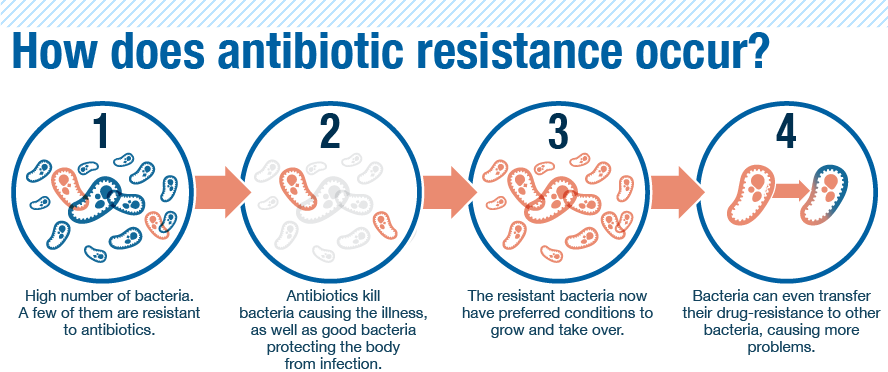Authored by Colin Todhunter via Off-Guardian.org,
A special report in the Observer newspaper in the UK on 23 June 2019 asked the question: Why is life expectancy faltering? The piece noted that for the first time in 100 years, Britons are dying earlier. The UK now has the worst health trends in Western Europe.
Aside from the figures for the elderly and the deprived, there has also been a worrying change in infant mortality rates. Since 2014, the rate has increased every year: the figure for 2017 is significantly higher than the one in 2014. To explain this increase in infant mortality, certain experts blame it on ‘austerity’, fewer midwives, an overstrained ambulance service, general deterioration of hospitals, greater poverty among pregnant women and cuts that mean there are fewer health visitors for patients in need.
While all these explanations may be valid, according to environmental campaigner Dr Rosemary Mason, there is something the mainstream narrative is avoiding. She says:
We are being poisoned by weedkiller and other pesticides in our food and weedkiller sprayed indiscriminately on our communities. The media remain silent.”
The poisoning of the UK public by the agrochemical industry is the focus of her new report – Why is life expectancy faltering: The British Government has worked with Monsanto and Bayer since 1949.
What follows are edited highlights of the text in which she cites many official sources and reports as well as numerous peer-reviewed studies in support of her arguments. Readers can access the report here.
TOXIC HISTORY OF MONSANTO IN THE UK
Mason begins by offering a brief history of Monsanto in the UK. In 1949, that company set up a chemical factory in Newport, Wales, where it manufactured PCBs until 1977 and a number of other dangerous chemicals. Monsanto was eventually found to be dumping toxic waste in the River Severn, public waterways and sewerage. It then paid a contractor which illegally dumped thousands of tons of cancer-causing chemicals, including PCBs, dioxins and Agent Orange derivatives, at two quarries in Wales – Brofiscin (80,000 tonnes) and Maendy (42,000 tonnes) – between 1965 and 1972.
Monsanto stopped making PCBs in Anniston US in 1971 because of various scandals. However, the British government agreed to ramp up production at the Monsanto plant in Newport. In 2003, when toxic effluent from the quarry started leaking into people’s streams in Grosfaen, just outside Cardiff, the Environment Agency – a government agency concerned with flooding and pollution – was hired to clean up the site in 2005.
Mason notes that the agency repeatedly failed to hold Monsanto accountable for its role in the pollution (a role that Monsanto denied from the outset) and consistently downplayed the dangers of the chemicals themselves.
In a report prepared for the agency and the local authority in 2005 but never made public, the sites contain at least 67 toxic chemicals. Seven PCBs have been identified, along with vinyl chlorides and naphthalene. The unlined quarry is still leaking, the report says:
Pollution of water has been occurring since the 1970s, the waste and groundwater has been shown to contain significant quantities of poisonous, noxious and polluting material, pollution of… waters will continue to occur.”
THE DUPLICITY CONTINUES
Apart from these events in Wales, Mason outlines the overall toxic nature of Monsanto in the UK. For instance, she discusses the shockingly high levels of weedkiller in packaged cereals. Samples of four oat-based breakfast cereals marketed for children in the UK were recently sent to the Health Research Institute, Fairfield, Iowa, an accredited laboratory for glyphosate testing. Dr Fagan, the director of the centre, says of the results:
These results are consistently concerning. The levels consumed in a single daily helping of any one of these cereals, even the one with the lowest level of contamination, is sufficient to put the person’s glyphosate levels above the levels that cause fatty liver disease in rats (and likely in people).”
According to Mason, the European Food Safety Authority and the European Commission colluded with the European Glyphosate Task Force and allowed it to write the re-assessment of glyphosate. She lists key peer-reviewed studies, which the Glyphosate Task Force conveniently omitted from its review, from South America where GM crops are grown. In fact, many papers come from Latin American countries where they grow almost exclusively GM Roundup Ready Crops.
Mason cites one study that references many papers from around the world that confirm glyphosate-based herbicides like Monsanto’s Roundup are damaging to the development of the foetal brain and that repeated exposure is toxic to the adult human brain and may result in alterations in locomotor activity, feelings of anxiety and memory impairment.
Another study notes neurotransmitter changes in rat brain regions following glyphosate exposure. The highlights from that study indicate that glyphosate oral exposure caused neurotoxicity in rats; that brain regions were susceptible to changes in CNS monoamine levels; that glyphosate reduced 5-HT, DA, NE levels in a brain regional- and dose-related manner; and that glyphosate altered the serotoninergic, dopaminergic and noradrenergic systems.
Little wonder, Mason concludes, that we see various degenerative conditions on the rise. She turns her attention to children, the most vulnerable section of the population, and refers to the UN expert on toxicity Baskut Tuncak. He wrote a scathing piece in the Guardian on 06/11/2017 on the effects of agrotoxins on children’s health:
Our children are growing up exposed to a toxic cocktail of weedkillers, insecticides, and fungicides. It’s on their food and in their water, and it’s even doused over their parks and playgrounds. Many governments insist that our standards of protection from these pesticides are strong enough. But as a scientist and a lawyer who specialises in chemicals and their potential impact on people’s fundamental rights, I beg to differ.
Last month it was revealed that in recommending that glyphosate – the world’s most widely-used pesticide – was safe, the EU’s food safety watchdog copied and pasted pages of a report directly from Monsanto, the pesticide’s manufacturer. Revelations like these are simply shocking.
…Exposure in pregnancy and childhood is linked to birth defects, diabetes, and cancer. Because a child’s developing body is more sensitive to exposure than adults and takes in more of everything – relative to their size, children eat, breathe, and drink much more than adults – they are particularly vulnerable to these toxic chemicals. Increasing evidence shows that even at “low” doses of childhood exposure, irreversible health impacts can result.
…In light of revelations such as the copy-and-paste scandal, a careful re-examination of the performance of states is required. The overwhelming reliance of regulators on industry-funded studies, the exclusion of independent science from assessments, and the confidentiality of studies relied upon by authorities must change.
WARNINGS IGNORED
It is a travesty that Theo Colborn’s crucial research in the early 1990s into the chemicals that were changing humans and the environment was ignored. Mason discusses his work into endocrine disrupting chemicals (EDCs), man-made chemicals that became widespread in the environment after WW II.
In a book published in 1996, ‘The Pesticide Conspiracy’, Colborn, Dumanoski and Peters revealed the full horror of what was happening to the world as a result of contamination with EDCs.
At the time, there was emerging scientific research about how a wide range of man-made chemicals disrupt delicate hormone systems in humans. These systems play a critical role in processes ranging from human sexual development to behaviour, intelligence, and the functioning of the immune system.
At that stage, PCBs, DDT, chlordane, lindane, aldrin, dieldrin, endrin, toxaphene, heptachlor, dioxin, atrazine+ and dacthal were shown to be EDCs. Many of these residues are found in humans in the UK.
Colborn illustrated the problem by constructing a diagram of the journey of a PCB molecule from a factory in Alabama into a polar bear in the Arctic. He stated:
The concentration of persistent chemicals can be magnified millions of times as they travel to the ends of the earth…
Many chemicals that threaten the next generation have found their way into our bodies. There is no safe, uncontaminated place.”
Mason describes how EDCs interfere with delicate hormone systems in sexual development. Glyphosate is an endocrine disruptor and a nervous system disruptor. She ponders whether Colborn foresaw the outcome whereby humans become confused about their gender or sex.
She then discusses the widespread contamination of people in the UK. One study conducted at the start of this century concluded that every person tested was contaminated by a cocktail of known highly toxic chemicals that were banned from use in the UK during the 1970s and which continue to pose unknown health risks: the highest number of chemicals found in any one person was 49 – nearly two thirds (63 per cent) of the chemicals looked for.
CORRUPTION EXPOSED
Mason discusses corporate duplicity and the institutionalised corruption that allows agrochemicals to get to the commercial market. She notes the catastrophic impacts of these substances on health and the NHS and the environment.
Of course, the chickens are now coming home to roost for Bayer, which bought Monsanto. Mason refers to attorneys revealing Monsanto’s criminal strategy for keeping Roundup on the market and the company being hit with $2 billion verdict in the third ‘Roundup trial’.
Attorney Brent Wisner has argued that Monsanto spent decades suppressing science linking its glyphosate-based weedkiller product to cancer by ghost-writing academic articles and feeding the EPA “bad science”. He asked the jury to ‘punish’ Monsanto with a $1 billion punitive damages award. On Monday 13 May, the jury found Monsanto liable for failure to warn claims, design defect claims, negligence claims and negligent failure to warn claims.
Robert F Kennedy Jr., another attorney fighting Bayer in the courts, says Roundup causes a constellation of other injuries apart from Non-Hodgkin’s Lymphoma:
Perhaps more ominously for Bayer, Monsanto also faces cascading scientific evidence linking glyphosate to a constellation of other injuries that have become prevalent since its introduction, including obesity, depression, Alzheimer’s, ADHD, autism, multiple sclerosis, Parkinson’s, kidney disease, and inflammatory bowel disease, brain, breast and prostate cancer, miscarriage, birth defects and declining sperm counts. Strong science suggests glyphosate is the culprit in the exploding epidemics of celiac disease, colitis, gluten sensitivities, diabetes and non-alcoholic liver cancer which, for the first time, is attacking children as young as 10.
In finishing, Mason notes the disturbing willingness of the current UK government to usher in GM Roundup Ready crops in the wake of Brexit. Where pesticides are concerned, the EU’s precautionary principle could be ditched in favour of a US-style risk-based approach, allowing faster authorisation.
Rosemary Mason shows that the health of the UK populations already lags behind other countries in Western Europe. She links this to the increasing amounts of agrochemicals being applied to crops. If the UK does a post-Brexit deal with the US, we can only expect a gutting of environmental standards at the behest of the US and its corporations and much worse to follow for the environment and public health.
via ZeroHedge News https://ift.tt/2GBj17W Tyler Durden












